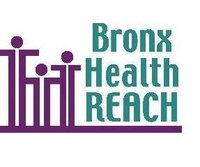
CHMP Senior Fellow Charmaine Ruddock, MS directs Bronx Health REACH, a coalition of 50 community and faith-based organizations, funded by the Centers for Disease Control’s REACH 2010 Initiative to address racial and ethnic health disparities.
So now, the Bronx, in addition to having the designation as the poorest urban congressional district in the United States (approximately, 40% of residents live below the federal poverty level), has the additional, unfortunate, designation of being the hungriest neighborhood in the country.
Here is the irony; we also have one of the highest rates of obesity. For children – 1 out of 3 in the borough’s Head Start program is obese, and nearly 4 in 10 in public elementary schools are overweight or obese. For adults – 1 in 4 adults is obese, and 2 in 3 are overweight or obese.
The other irony is that the Hunts Point Terminal Produce Market, which is the second largest wholesale market in the world, supplying 60 percent of the city’s fresh produce, is located in the Bronx. But little of this gets to the hungriest Bronx residents, especially those in the South Bronx.
This seeming paradox of being the hungriest as well as the most overweight and obese actually reflects two sides of the same problem. Poor people with very limited resources also have access to the worst nutritional quality of food. What they can afford limits their food choices to those that are calorie dense but nutritionally poor. However, this represents a potential market for the cheap food industry, thus it should come as no surprise that there has been a large influx of fast food restaurants in the Bronx. And, if you read The Extraordinary Science of Addictive Junk Food in the New York Times Magazine you were made even further aware of the enormous odds that the poor and hungry face in trying to feed themselves and their families.
Despite all this, community residents and their food justice activists allies are working tirelessly, with several efforts underway, to improve access to healthy food in the Bronx. These include Bronx Health REACH Healthy Bodega program, New York City Department of Health Green Cart Initiative and Healthy Bodegas Initiative, New York City’s FRESH Program, and City Harvest’s Healthy Corner Stores Network.
This is by no means an exhaustive list. Even FreshDirect is now evincing an interest in not only increasing access to healthy food in affluent neighborhoods but also in neighborhoods whose residents need food stamps to feed themselves and their families. There are some Bronx residents who are skeptical of FreshDirect’s sincerity and are organizing against their plans to relocate their operations to the Bronx.
As Borough President Ruben Diaz Jr. envisions the New Bronx he spoke of in his State of the Borough address we implore and challenge him and his advisers to include the need to eliminate hunger as one of his top priorities and a cornerstone of his vision of the New Bronx. In solidarity with the poor and hungry in the South Bronx, let us all dream a borough free from hunger and then let us all work hard to make that dream a reality.
written by Charmaine Ruddock










Diana Mason / March 8, 2013
This is such an incredible issue. The national declarations of the reduction in obesity rates need to be tempered by disparities that persist. I understand that the CDC is no longer funding community-based organizations that are focused on reducing health disparities. With the cuts in federal funding of programs from the sequestration, I’m hearing that WIC programs are in jeopardy, as well as other safety net programs. The disparities will only increase, I fear.
/
Pingback: Poverty & Race Two Topics People Avoid | Global Hip Hop Battles- The site for online battles and hip hop news updates / March 8, 2013
/
susan cheung / March 9, 2013
This is so detrimental to our nation. This represents one of the many issues surrounding health promotion. It is expensive to eat healthy and to take care of your body. In the website with Healthy People 2020, there are data and trends comparing and contrasting between the “wealthy communities” vs the “poor communities,” and it’s interesting to see how the types and locations of supermarkets or grocery shops vary in all degrees. Even, having access to these grocery shops can be difficult for some communities because transportation modes are limited. For example, I received an influx of patients with uncontrolled diabetes because their neighborhoods were destroyed by Hurricane Sandy, leaving no choice but to eat whatever is provided.
/